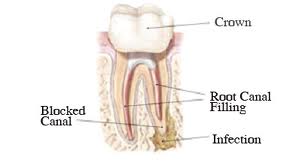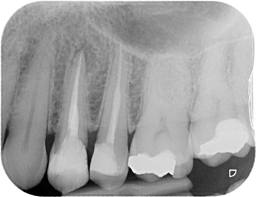 Most root canal treatments are successful – the treated tooth lasts as long as the healthy teeth surrounding it. However, in some cases problems reoccur with the treated tooth, months or years after initial treatment. If this occurs, root canal retreatment may be recommended as an alternative to extraction.
Most root canal treatments are successful – the treated tooth lasts as long as the healthy teeth surrounding it. However, in some cases problems reoccur with the treated tooth, months or years after initial treatment. If this occurs, root canal retreatment may be recommended as an alternative to extraction.
 Patients are often referred to an endodontist for retreatment, as the retreatment is often more complex than the original root canal treatment.
Patients are often referred to an endodontist for retreatment, as the retreatment is often more complex than the original root canal treatment.
Problems may reoccur for a variety of reasons. In some cases, the original treatment was not successful in removing all of the inflamed or infected tissue. If the crown was not placed soon enough after the procedure, or if the crown did not completely seal the pulp of the tooth, saliva can reach the pulp and cause another infection.
In other cases, the original treatment and restoration were initially successful, but new problems affect the tooth. New decay can expose the filling and cause infection, or the crown may become damaged and allow new infection.
Root canal retreatment involves the same basic steps as a root canal. The dentist or endodontist begins by applying local anesthesia and isolating the area with a rubber dam. Then they remove the crown to access the infected filling, and remove it and clean the area with specialized tools. After thoroughly examining the canals to be sure that all infected material is gone, the endodontist disinfects the canals and fills them with a filling material. Finally they must seal the surface of the tooth with a temporary crown to prevent further infection and restore the function and appearance of the tooth.
The root canal retreatment is typically performed in one visit. The patient typically returns to their dentist for a second appointment to place the permanent crown that will seal and protect the tooth from further infection.
